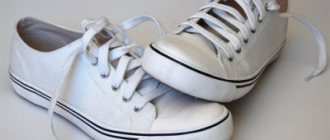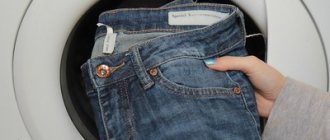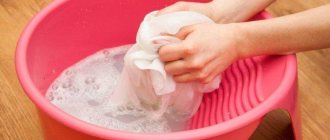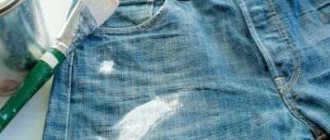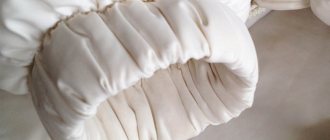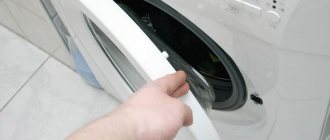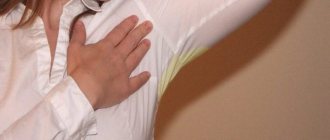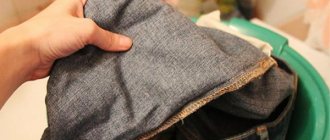Modern chemistry with its vast capabilities significantly changes everyday life. Moment glue is one of the convenient things that is found in almost every home. Thanks to it, it is easy to repair things at home that would previously have had to be thrown away. Grandma's favorite cup and vase, comfortable sneakers or veneer next to the cabinet - everything will be glued instantly.
However, the advantages of “Moment” turn into its disadvantages, as soon as you drop it on your clothes. Removing quickly hardening glue is not so easy. Don't despair - there are several ways to remove Moment glue from clothes, even at home.
Features of the glue composition
Convenient, indispensable glue has been known in our country for 40 years. Its composition complies with modern environmental standards, which is very important in everyday life. In the first years after its appearance on the domestic market, there was only one “Moment”. However, to date, glue is represented by a whole line of products, each composition is intended for specific purposes.
Universal glue that glues everything - “Moment 1”. “Moment Marathon” is produced for shoes, but the rubber surfaces on it can also be connected using “Moment Rubber”. “Crystal” allows you to make the place where various objects are glued together invisible, and a powerful “Moment-gel” is produced for vertical surfaces. All of these products glue quickly, but the range of compounds that only take a few seconds to set is not limited to this.
All versions of Moment glue differ slightly in composition depending on what they are intended for. Therefore, if glue gets on clothing or other fabric surface, it will have to be removed in various ways.
How to wipe dry?
In a situation where super glue has left a mark on clothing for a long time, washing with powder or washing with laundry soap will be ineffective. Special compounds that can dissolve dried Moment will come to the rescue.
The structure of frozen super glue is destroyed by acetone-containing agents, alcohol, and a solvent based on dimethyl sulfoxide - pharmaceutical dimexide.
By acting on cynoacrylates, these products soften the dried stain . No less effective is an approach such as exposure to low (freezing) and high (iron) temperatures.
If the first application fails to remove traces of glue using home methods, you can try again, but using special preparations.
How to remove Moment glue from clothes
There are special liquids for removing glue stains. However, they are not always at hand at the right time. It is sometimes possible to deal with a fresh stain using home remedies; it is only important to know how you can remove Moment glue from clothes using what you have in the house.
Important! When using any cleaning product, you should test it on an area of fabric that is not visible to prying eyes. The inner seams of the product are best suited for this.
Chemicals
A drop of glue that gets on your clothes will harden very quickly. Almost always you have to deal with an already dried stain. Some chemicals that are found in almost every home can help:
- Acetone. If it turns out that it does not dissolve or spoil the fabric from which the clothes are made, it is convenient to use it as a “dry cleaner”. It is better to work with a cotton ball. It is generously moistened with solvent and the stain is rubbed, moving from the edges to the middle. Acetone allows you to wipe “Moment” off denim and other bright fabrics, but this will leave a whitish, lightened stain on the item. If the glue has been removed, the item must be washed. This will not only reduce the likelihood of a trace, but also eliminate the unpleasant odor of the solvent.
- If you don't have pure acetone in the house, nail polish remover will come in handy. It has a weaker effect, so a cotton wool soaked in liquid should be applied to the stain and held for several minutes. If you're lucky, the glue will come off along with the cotton wool.
- Gasoline will also help get rid of the “Moment”. The principle of operation is the same as with nail polish remover. Wet cotton wool is pressed onto the stain and held for several minutes. As a rule, it is not possible to remove the glue the first time, so the operation is repeated until the result is obtained, using fresh cotton swabs.
- A strong anti-glue agent is white spirit. This solvent is quite aggressive, so it is especially important to ensure that it does not damage clothing. It cannot clean delicate fabrics, but it can handle glue easily.
Note! You cannot wipe glue off clothes with a sponge. Chemicals can dissolve it, and a new stain forms on the fabric, this time from the sponge.
Folk remedies and methods
Folk remedies are the result of the ingenuity of resourceful craftsmen. Often they allow you to cope with the task even without industrial solvents.
One effective home method is freezing. The soiled item is placed in a plastic bag and placed in the freezer of the refrigerator for 6-7 hours. Long-term freezing allows you to scrape off the stain or remove most of it. After freezing, the glue is separated from the clothing with a stiff brush. It removes frozen glue and ammonia well.
If it was not possible to get rid of the glue the first time, repeat the attempt after the fabric has warmed up to room temperature. If the freezer's power is not enough, an aerosol for quick freezing will help.
Important! Fresh traces of glue are easier to remove. Therefore, you need to get down to business right away.
Old adhesive residues can be removed by ironing.
Cover the stained area with a napkin and iron it with a hot iron. The napkin should be changed frequently and the procedure repeated until the stain is completely removed. The easiest way to deal with is “Moment”, intended for wallpapering. Anything with traces of glue must be soaped with laundry soap and soaked in a small amount of water, and then simply washed.
Household products
To clean clothes at home, they often use products that seem not intended for this purpose. These include:
- Vinegar - 9% solution is diluted with water in a ratio of 1:2. A cotton swab is moistened in liquid and applied to the stain for 1-1.5 hours. After this, thoroughly wipe the contaminated area with a fresh swab soaked in the solution.
- You can try to save clothes made from delicate fabrics using citric acid. 20 g of acid is diluted in half a glass of water, the affected area is moistened with the solution and left for an hour and a half, after which it is washed.
- A cosmetic body scrub can provide unexpected help. The microgranules it contains make it possible to remove stains from even the fastest-acting “Moment”. To remove a stain, it is useful to thickly lubricate it with Vaseline and leave for an hour, then scrape off the surface layer and begin scrubbing. After processing, the item must be washed.
- If you have Dimexide in your home medicine cabinet, this medicine is also used to combat glue. Cotton wool is generously moistened with Dimexide and the contaminated area is wiped. Then you should wait a little while the solution interacts with the glue. Afterwards the item must be sent to the wash. Dimexide is good because it can be used for any type of fabric.
Special
The arsenal of remedies for dealing with glue stains is not limited to home remedies. There are also specially designed cleaners that allow repair work to be carried out without loss. First of all, this is the “Super Moment Antikley”. It is produced by the same company that produces adhesives in the “Moment” line. It allows you to carefully remove traces of glue from clothes, but you should use it strictly according to the manufacturer’s instructions.
We recommend:
Dishwasher salt - is it necessary to add?
The Swiss "Glue Remover Secunda" also allows you to restore damaged clothes. Suitable for any materials, including fabrics. It is also capable of removing chewing gum.
Important! Before using anti-glue, you should test it on the inside seam of your clothing. Just like the glue itself, it can damage the fabric.
Typically, anti-glue is applied to the stain and left for several hours. The duration of treatment depends on the fabric and intensity of contamination. Then the residue is wiped off with a napkin.
Home Remedies
Before you clean the glue on your clothes and remove the stain using household chemicals, you can try to do this with simple home remedies that everyone has in their home.
Table vinegar
This tool is good because it is always at hand. However, using vinegar to clean synthetic fabric is not recommended, as the item may lose its shape. It needs to be mixed with warm water in a 1:1 ratio and soak the contaminated area in the prepared solution for a quarter of an hour. Soaked glue is removed with something sharp.
Lemon acid
If the stain being cleaned is not too old, citric acid will help. Dissolve 1 table. a spoonful of citric acid in a glass of water. Moisten the problem area with a cotton swab and leave the clothes in this form for 30-50 minutes. After treatment, wash by hand in warm water with washing powder.
First steps with a fresh stain
If glue gets on clothing, it must be cleaned immediately. However, it should be remembered that “Moment” sets instantly, so you cannot wash it with a paper napkin or cotton wool - they will instantly stick. First of all, you need to remove the affected toilet part from yourself and lay it out on a flat surface. It is advisable to place something solid under the stain and begin cleaning immediately, otherwise it will leak and stick to the substrate.
It is best to remove the drop with a knife, immediately wiping the glue from the blade. On thick fabric, this method will get rid of most of the dirt. But if “Moment” gets on loose wool, you shouldn’t scrape the stain. You will have to remove the glue when it dries.
To weaken the effect of “Moment”, it is recommended to soak the affected area in a soap solution, citric acid solution or ammonia solution (1-2 teaspoons per liter of water). After 20 minutes, you can try to clean the stain with a stiff brush and then wash it.
What not to do
When attempting to remove glue stains from jeans, it is important to consider a number of factors. Not only the result is important, but also its effectiveness. The purpose of high-quality cleaning is not only to remove traces of glue, but also to keep the item in good condition. The main thing is to know what exactly you should not do after discovering a problem:
- Any product must be tested on an inconspicuous area of tissue. Solvents can discolor the material or damage its fibers.
- Some types of glue cannot be soaked or washed. Their adhesive properties will only increase from contact with water. It is better to read about this on the glue packaging.
- When applying cleansers, do not leave them on the jeans for a long time. The period sufficient for the reaction is 15-20 minutes.
Interaction with glue should be as careful as possible. It is best to use protective clothing and gloves. Preventive measures are always more effective than any cleaning method.
But if trouble does occur, then you can use the most suitable option for removing glue from those described in this article.
Useful tips
There are a number of important details that you need to remember when working with Moment glue:
- There is no point in leaving the fight against stains “for later”. The glue binds the fibers of the fabric, and then slowly begins to crumble. Along with it, the soiled area of clothing is destroyed.
- It is easy to remove a drop from leather products with a knife, and carefully remove the remainder with a nail file when the glue has dried.
- Apply tampons moistened with the selected stain remover on both sides of the product at the same time.
- White things can be cleaned using “Whiteness”. It is rubbed into the affected area with a toothbrush, and then the product is washed.
- If you need to remove an old stain, soak the clothes in hot water with the addition of soda, washing powder or dishwashing detergent. After a few hours, it is removed and one of the listed cleaning methods is used.
If you were unable to deal with the glue yourself, it makes sense to take the item to the dry cleaner. However, she too may fail. It is better to use things for household work that you don’t mind parting with.
Rate this post
Anticlean
Now almost all manufacturers of adhesive compositions are developing specialized products for their removal. These are so-called anti-adhesives. Their use can be justified at any stage of glue drying. Even if the jeans have been stained for a long time, anti-glue will cope with this task effectively.
For treatment, the product is applied to the problem parts of the jeans and left for some time. The duration of action depends on the type of cleanser. Information can be read on the packaging. After the anti-glue has cured, it should be scraped off from the material. After this, the jeans are washed.
The anti-glue should be chosen from the same company as the adhesive solution.
Temperature effect
High and low temperatures affect the properties of the adhesive. After such exposure, it will be possible to easily remove its remnants.
Cold
The cold will cause the glue to harden and become brittle, making it easier to remove from the surface.
To freeze a stain, place the item in the freezer. Before that:
- Fold it so that the dirty area does not come into contact with the clean cloth.
- Pack in plastic, because there is a chance of new stains in the freezer.
- Leave for an hour and a half.
If the stain is not thick, then after freezing it should be crumbled with a sharp object (knife, fork, awl). If you cannot cope with such tools, you can break the hardened glue with a hammer, rolling pin, etc.
The final step will be washing in water with powder.
Heat
The properties of “Moment” also change with high temperatures. At 80 degrees, even dried glue begins to melt.
The easiest way to heat is to use an iron.
- Place two pieces of scrap fabric under and on top of the soiled clothing.
- Place a heated iron on top. It will soon melt the glue. Don't miss this moment.
- Try to remove the melted mass with a relatively sharp object (for example, a plastic card will help), while squeezing and scrubbing it from the clothing.
The last step will be washing again.
